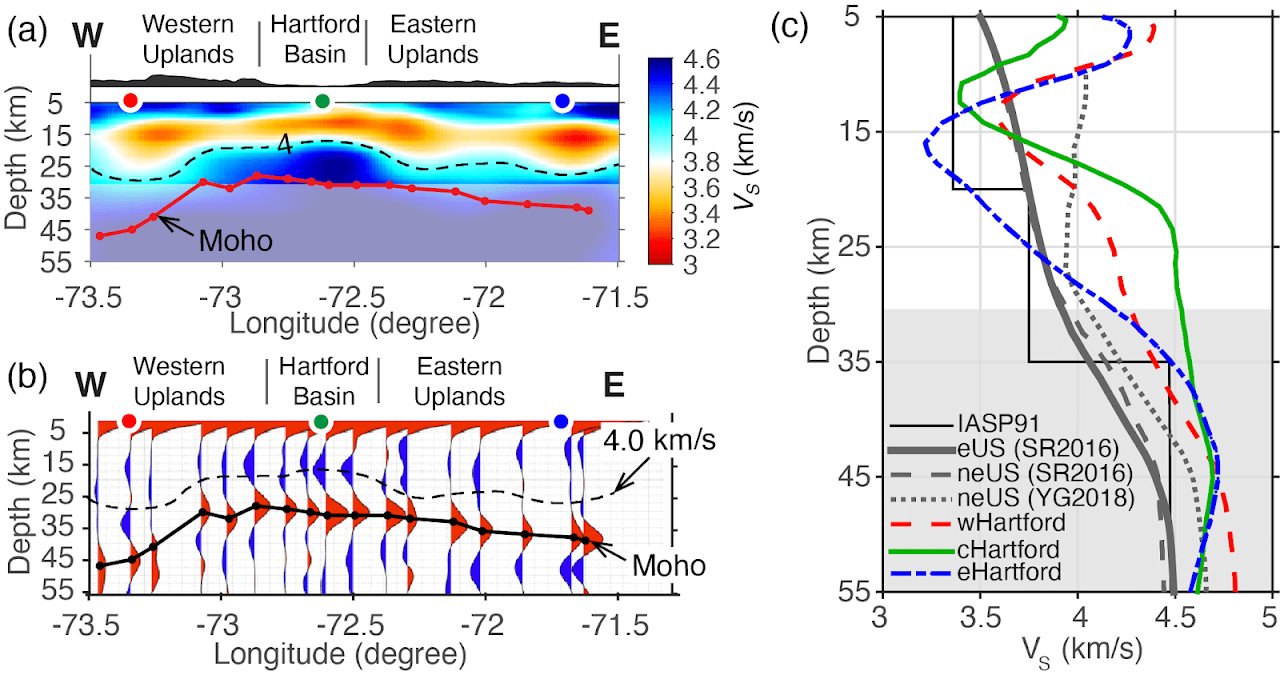Research
Segmentation of the Alaska subduction and volcanic activity - Alaska margin
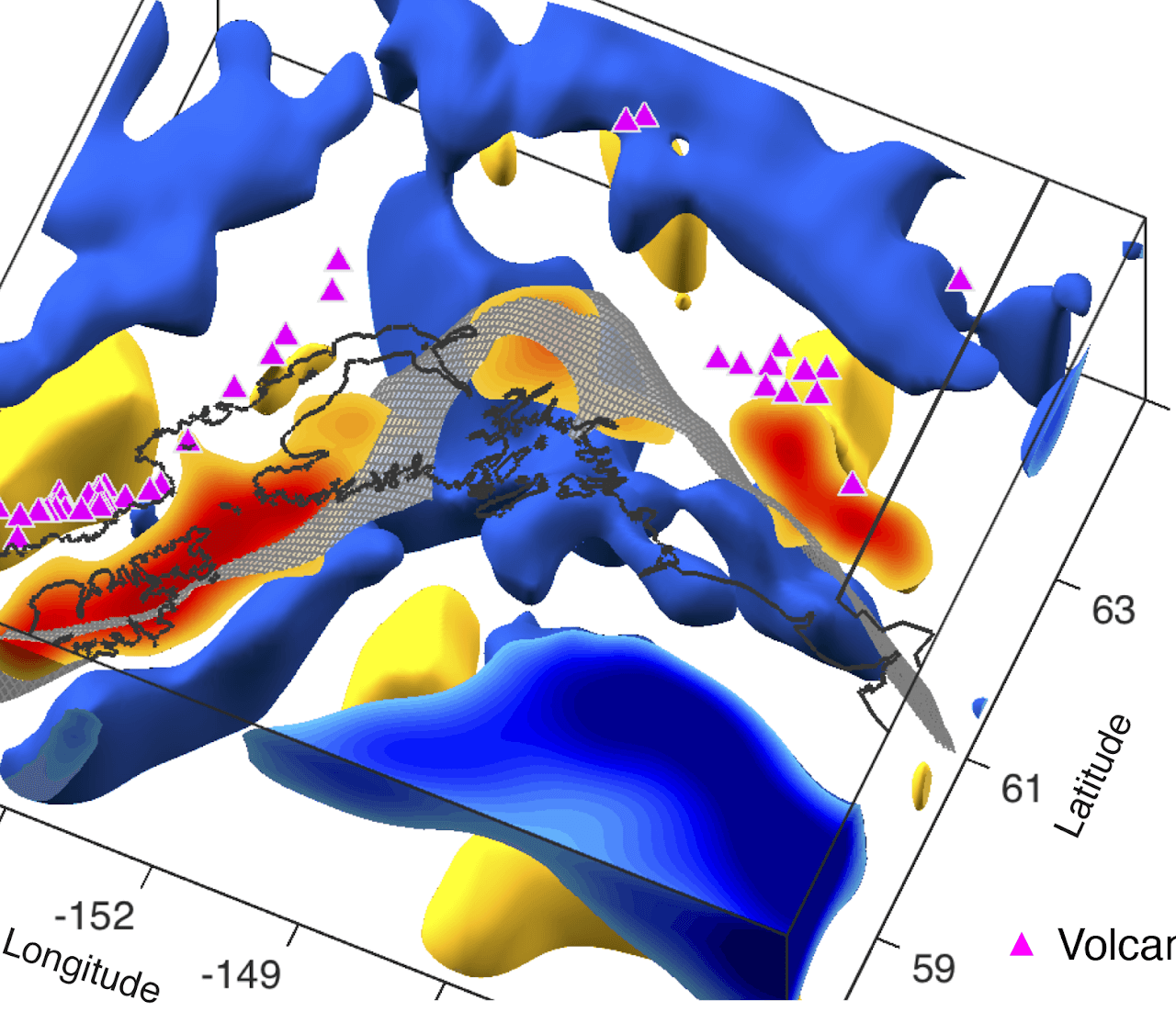
Yang, X., H. Gao (2020). Segmentation of the Aleutian-Alaska subduction zone revealed by full-wave ambient noise tomography: implications for the along-strike variation of volcanism, Journal of Geophysical Research-Solid Earth, doi: 10.1029/2020JB019677
Crustal modification during continental rifting - Hartford Basin
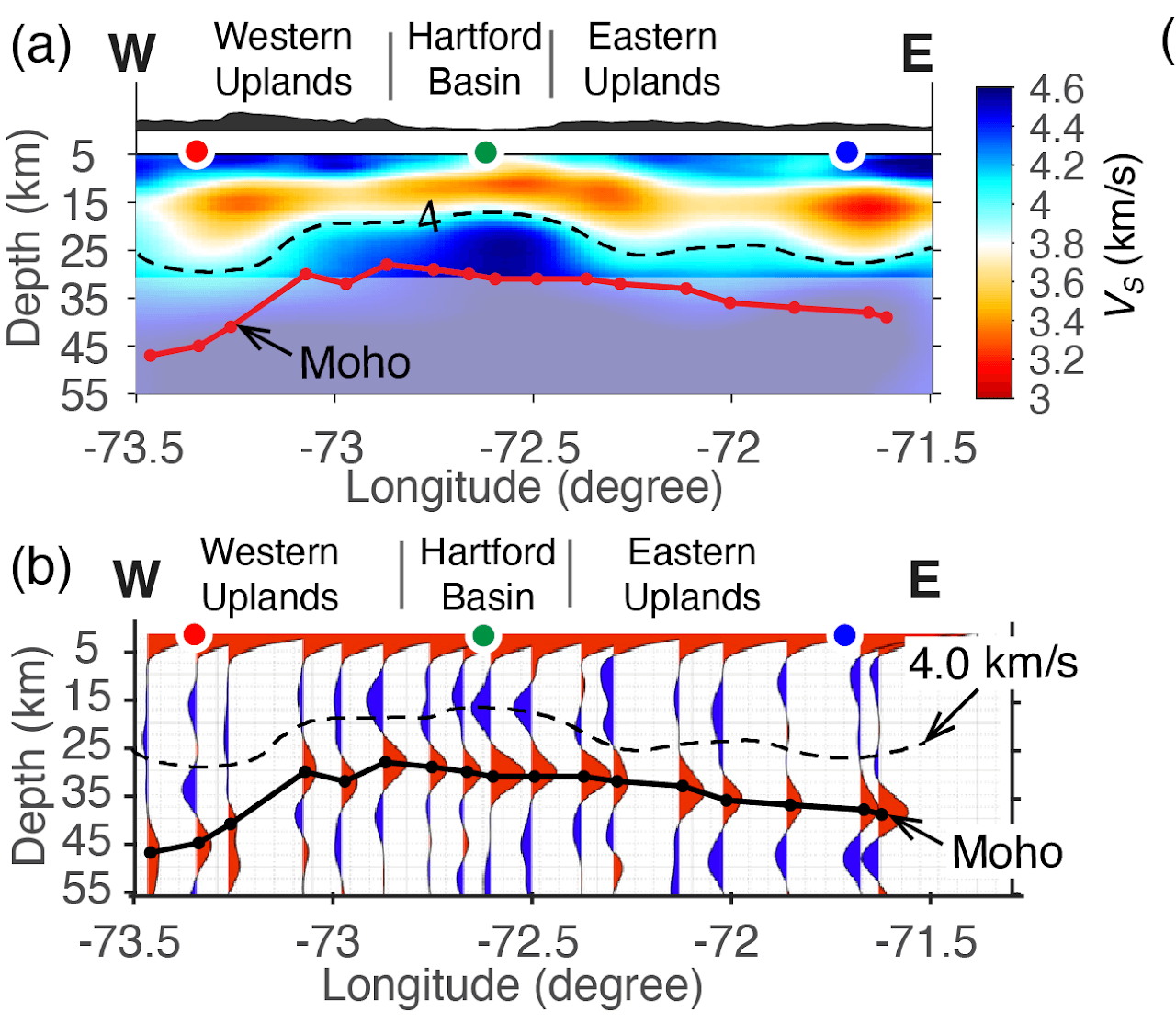
Gao, H., X. Yang, M. Long, and J. Aragon (2020). Seismic Evidence for Crustal Modification Beneath the Hartford Rift Basin in the Northeastern United States, Geophysical Research Letters, https://doi.org/10.1029/2020GL089316
Uplift of cratonic mountains - Adirondack Mountains
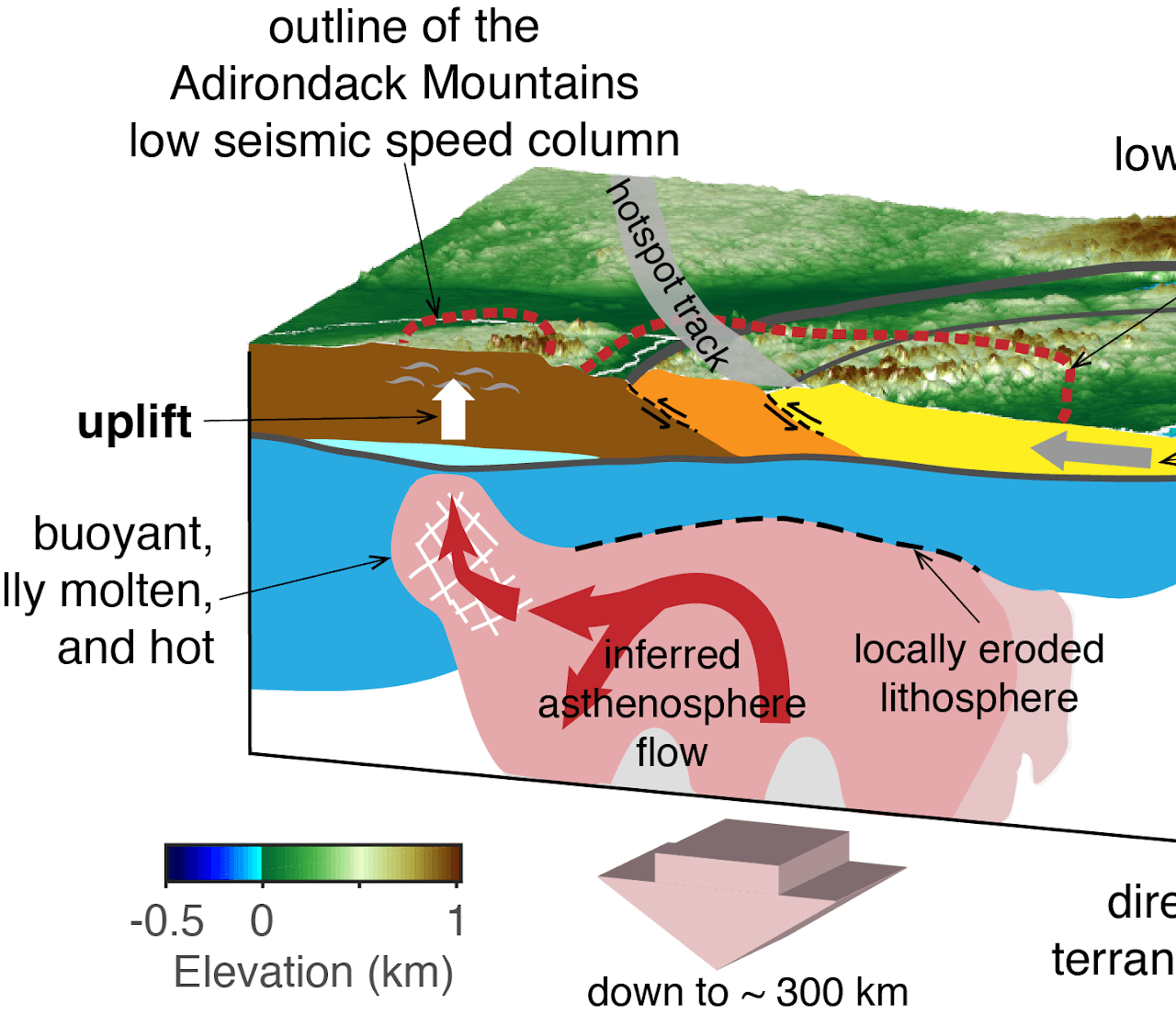
Yang, X., H. Gao (2018). Full-Wave Seismic Tomography in the Northeastern United States: New Insights into the Uplift Mechanism of the Adirondack Mountains, Geophysical Research Letters, 45, https://doi.org/10.1029/2018GL078438
Subsidence of cratonic basins - Illinois Basin
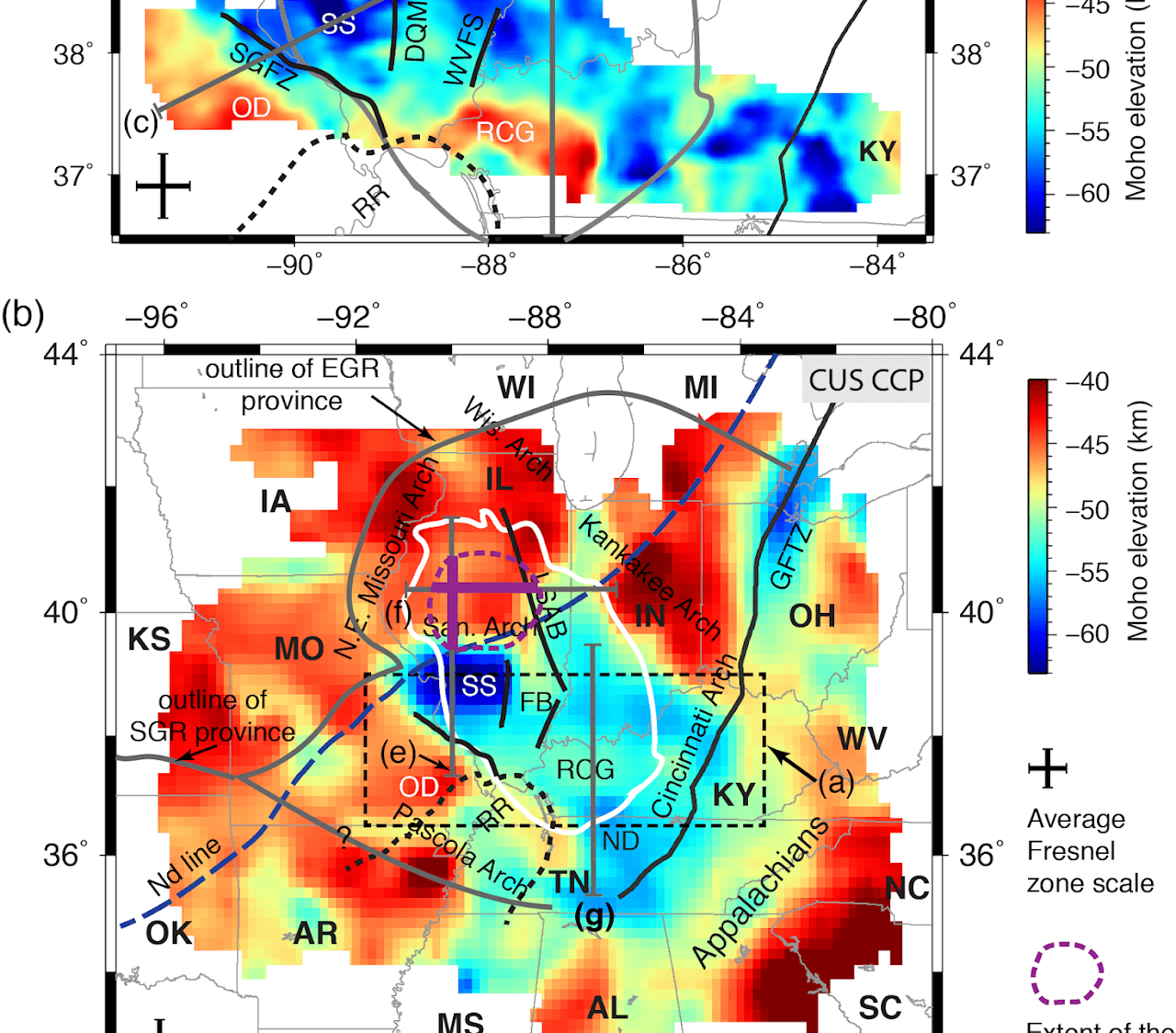
Yang, X., G. Pavlis, M. Hamburger, H. Gilbert, C. Chen, S. Marshak, T. Larson, S. Carpenter (2017). Detailed Crustal Thickness Variations beneath the Illinois Basin Area: Implications for Crustal Evolution of the Midcontinent, Journal of Geophysical Research-Solid Earth, 122, doi: 10.1002/2017JB014150
Research in Detail
2019-2021: Characterization of seismic wavefields and the ground motion of future megathrust earthquakes on the Cascadia subduction zone.
This study investigates the earthquake ground motions along the Cascadia subduction margin. Using virtual earthquakes from seismic ambient noise cross-correlations, we found that the strongest ground motions occur mainly at the Seattle Basin, the Portland Basin, and the near coast offshore region along the accretionary wedge. Check here for details.
2018-2019: Crustal modification during terrane accretion at the eastern North American margin (southern New England).
The eastern North American margin has undergone two complete Wilson cycles of assembly and breakup of the supercontinents, together with terrane accretion, rifting, and post-rift evolution. It is not clear how the continental crust has been modified by these tectonic processes. Southern New England, which is composed of a few tectonic terranes, is an ideal place to study the crustal modification associated with the tectonic activities inferred from surface geology. The deployments of the EarthScope Transportable Array (~70-km spacing) in the northeastern United States and the SEISConn (Seismic Experiment for Imaging Structure beneath Connecticut) array (~ 10-km spacing) have provided unprecedently dense coverage of seismic data for southern New England. Using full-wave ambient noise tomography, we aim to address the following scientific questions:
- What are the seismic characteristics associated with tectonic activities at the margin?
- What is the mechanism of the Hartford basin and the implication on rift evolution at passive margins?
